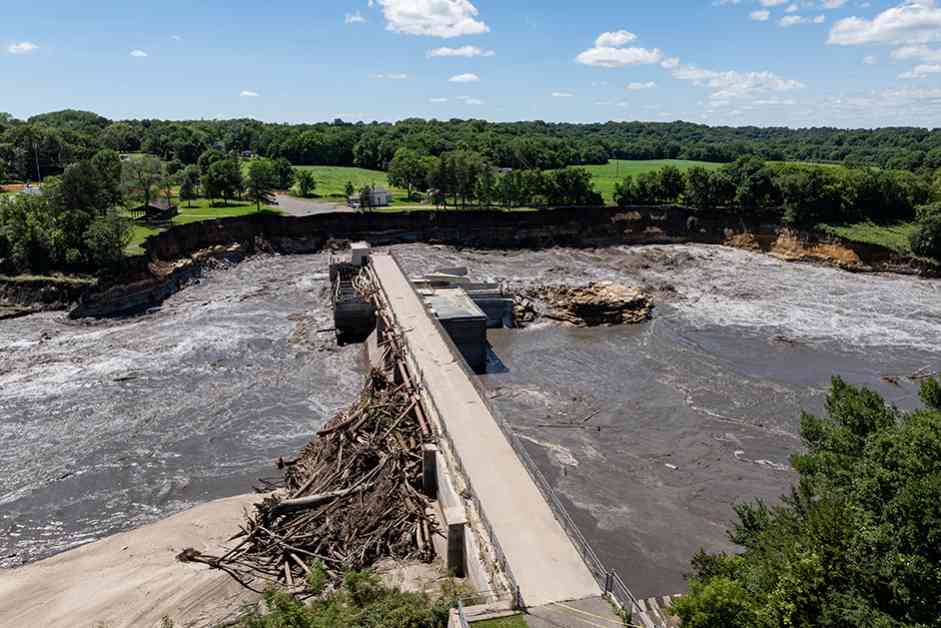A substantial amount of federal funding is set to be allocated to states to address the challenges posed by aging dams, many of which are facing increased pressure due to the impacts of climate change leading to more frequent extreme weather events. The Bipartisan Infrastructure Law passed in 2021 has dedicated around $3 billion to dam projects, with a portion of these funds already being distributed to states through various federal grant programs aimed at enhancing dam safety and upgrading hydropower infrastructure.
This year, FEMA has distributed a record $215 million in dam safety grants, while the Department of Energy has allocated over $433 million for projects aimed at enhancing safety and grid resilience for hydropower dams across 33 states. However, Midwestern states are receiving a significantly smaller share of this funding compared to other regions in the U.S. A recent analysis of federal data by Inside Climate News revealed that only $30 million is going to 11 Midwest states, whereas 13 Southern states are set to receive roughly $60 million, and 11 Northeastern states will receive $60 million. Western states are also slated to receive around $45 million.
State dam safety officials attribute this discrepancy to various factors, including the presence of larger dams with more downstream residents in the West and Northeast. FEMA is prioritizing dams in the poorest condition that pose the greatest risk to the public due to limited funding availability. Midwest states also have fewer hydroelectric dams compared to coastal and Southern states. This situation has left many Midwestern states facing challenges in addressing the repair and maintenance needs of their aging dams, some of which are privately owned and could lead to significant economic damage and potential loss of life if they were to fail.
Flood events in several Midwestern states, including Minnesota, Wisconsin, Ohio, and Illinois, have highlighted the vulnerabilities of aging dams. Despite this, some of these dams do not qualify for federal dam safety grants currently available. The need for more funding opportunities to address these challenges is evident, as underscored by Mia Kannik, Ohio’s Dam Safety Program manager, who emphasized the high costs associated with repairing or removing dams.
While some states have received funding to address their most dilapidated dams, such as Ohio receiving $10.9 million from FEMA, officials acknowledge that these funds are insufficient to meet the extensive needs of aging dam infrastructure. With over 500 of Ohio’s dams in poor or unsatisfactory condition, and more than 4,200 dams across the country posing threats to human lives and property, the estimated cost to repair the majority of U.S. dams exceeds $157 billion.
The annual conference of the Association of State Dam Safety Officials provides a platform for Midwest safety officials to discuss regional challenges, including funding limitations for dam safety projects. While the federal funding injection from the Bipartisan Infrastructure Law has been welcomed, there are concerns that these high funding levels may not be sustainable in the long term. FEMA’s remaining grant funds are expected to run out after next year, potentially halting crucial dam safety work unless further funding is secured through additional legislation.
State officials stress the need for consistent, long-term funding to address the backlog of dam maintenance and repairs. The public awareness of dam safety issues remains relatively low, with efforts being made to educate residents about the risks associated with aging dams and the importance of securing adequate funding for their maintenance and repairs. The challenges faced by Midwest states in accessing federal funding for dam safety projects underscore the need for sustained support and investment in infrastructure to ensure the safety and resilience of the nation’s dams.


